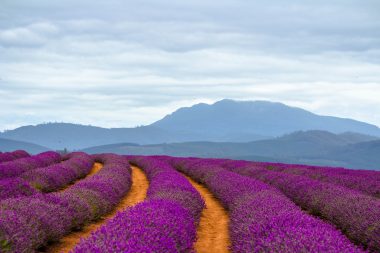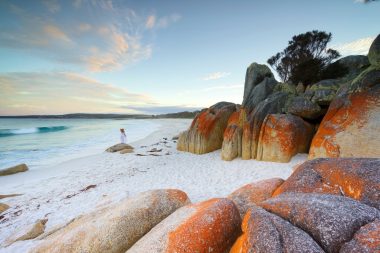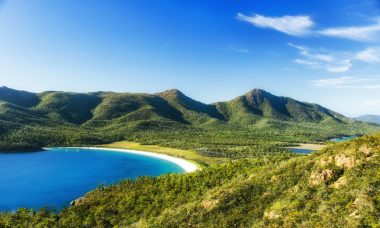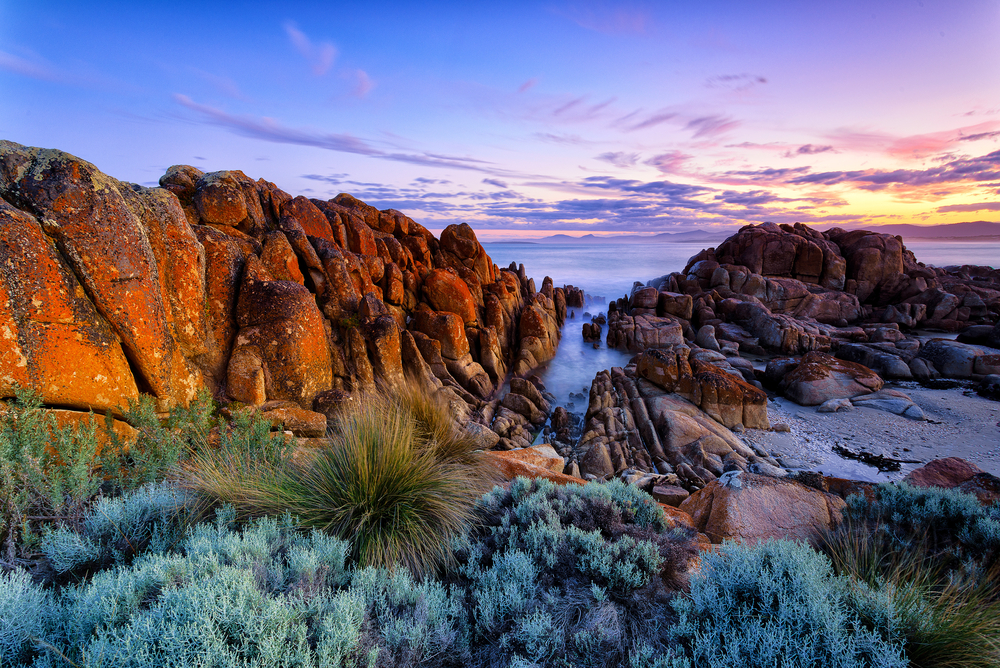Tasmania – You could write off Australia’s southernmost state as small and not exciting. A strange little corner at the end of the world, famous as the origin of the Danish Crown Princess Mary, as a growing area for apples and the cartoon devil.
However, you can find out here why this would be a big mistake and what you should definitely not miss on a trip to Tasmania.
Tasmania – A World of Its Own

Is it due to its location 240 kilometers south of the Australian mainland? In any case, Tasmania feels like a world of its own. This is most evident in its stunning landscapes, which include everything from white-sand beaches to snow-capped mountains and wild, rugged coastal cliffs. Ambitious photographers and travel bloggers will be pleased. Because these landscapes are so photogenic that it is almost impossible to take a bad picture.
The best destinations to enjoy this beautiful nature are Cradle Mountain in the west of the state and the Bay of Fires, Freycinet National Park, the Tasman Peninsula and Mount Wellington in the east. If this sounds like an incredibly long list for just one holiday, keep in mind that Tasmania is actually quite small. It never really takes more than two hours to get from one place to another.
Dove Lake Circuit and the Boar Shed

If you have the opportunity to take the famous 65-kilometre overland trail along the steep ridges and tumbling waterfalls of Cradle Mountain, be sure to do it. If not, the two-hour “Dove Lake Circuit” at the base of the mountain is almost as spectacular, taking you right past the lake’s boat shed, one of Tasmania’s most photographed landmarks.
On the east coast, a trip to Freycinet National Park puts you right in the middle of another state landmark – Wineglass Bay. Bordered by turquoise waters on one side and dense bushland on the other, the perfect crescent of white sand is delightfully secluded as it is only accessible via a two-hour hike. There’s a good chance you’ll have this place all to yourself – at least for part of your visit – unless you count the local Potoroos as company.
Tasmania’s Perfect Beaches

Locals in the nearby Bay of Fires claim that their beaches are even more impressive than those of Wineglass Bay, although they are less well known. They are definitely worth a visit. The vivid colors – the crystal blue water, the almost dazzling white sand and the typical red boulders – have a truly unique appeal. The abundance of marine life is the icing on the cake of the postcard Idyll-i. Hundreds of fish cavort right on the coast and are washed up by the huge tentacles made of seaweed brought in by the tide. Get your Angek out—catching dinner has never been easier.
Further south, right near Port Arthur, which is worth a visit for both its eerie beauty and fascinating history, you’ll come across the Tasman Peninsula. It’s wild and rough here. Millions of years of strong winds and wild seas have created all sorts of geological wonders, from a fully functional blowhole (another is located in the charming seaside town of Bicheno) to Tasman’s Arch, Devil’s Kitchen and the world’s best example of mosaic pavement.
Mount Wellington is the last item on Tasmania’s list of incredibly beautiful landscapes. The mountain rises a proud 1271 meters above the city of Hobart. There are many beautiful hikes you can do around the mountain, or – if you don’t feel like physical exertion – a nice, paved road that you can take to the summit.
If you’re up for a sporting challenge, consider the Point to Pinnacle Half Marathon, which runs up the mountain every November. Even if you are panting, your legs are already giving way and you are completely exhausted, the spectacular view makes up for all the agony.
Culinary delights in Tasmania
With so much physical exertion, you’ll be pleased to hear that Tasmania is home to some of Australia’s best food. Be sure to try the lamb ribs at Launceston’s Geronimo, a Bruny Island Oyster, one of the modern gourmet dishes at Hobart’s Franklin, or a spiced quince and walnut tart at Jackman and McRoss.
And Tasmania’s drink selection is similarly excellent. Vineyards like Wines for Joanie, Delamere, and Spring Vale offer more than drinkable delights. On the whisky front, Lark does magical things with fermented rye, and Bruny Island House of Whisky knows how to make a tasting an extraordinary experience. Insider tip: Try a bottle of Willie Smith’s organic cider wherever you come across it. The manufacturers have managed to find the perfect balance between sweet, bitter and bubbly.
MONA – the craziest art gallery in Australia
It would be impossible to write a piece about Tasmania without mentioning MONA, arguably Australia’s best-known and most controversial art gallery. Here, you’ll find a wall of 150 shaped vaginas of all shapes, sizes, and hairstyles, a machine that eats and defecates like clockwork—it also farts pretty regularly, causing more sensitive visitors to wrinkle their noses and leave the room in disgust—and a few goldfish swimming around a carving knife in a tiny bowl. The majority of the gallery is still located 17 meters below ground in a dark and cavernous room. Is it strange? Yes! Is it a once-in-a-lifetime experience? Absolutely!
In addition to picturesque landscapes, culinary delights and idiosyncratic art, there is of course much more to discover in Tasmania. But it’s best to find out for yourself and visit this unique piece of earth. You’ll regret it if you don’t


